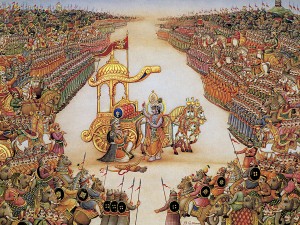While I much respect and admire the kind of work Devdutt Pattanaik is doing in bring Indian mythology to the fore, he has written numerous books and spoken at various TedX events on the same, yet I am much disappointed by his latest post on qz.com, titled “Here is what they don’t tell you about feminism and sexuality in Hindu mythology”. It is a well-written piece on a well-read website, yet at the core of it, it makes a lot of errors not only in terms of judgements but also on inferences drawn from them. The very first words of the piece start with, “Hindu Mythology reveals”. This can be a very dicey phrase to begin with. You see, mythology by a simple definition is actually a story or a tale. And being one, it cannot really reveal anything; one can only make interpretations of it, to guess what the thought process was in that time when the same had been supposedly penned. Thus, as a corollary, etiological study of epics like Mahabharata or Ramayana are as prone to misinformation, as say an archaeological study is.
with. You see, mythology by a simple definition is actually a story or a tale. And being one, it cannot really reveal anything; one can only make interpretations of it, to guess what the thought process was in that time when the same had been supposedly penned. Thus, as a corollary, etiological study of epics like Mahabharata or Ramayana are as prone to misinformation, as say an archaeological study is.
Coming to the primary premise of the said piece that talks about a very important issue of feminism and equality in ancient Indian times. The objective is much noble, but then, it starts of in a weird manner, stating that in the Mahabharata, there is an allusion of a time, where “men and women were free to go to anyone, until it became important to establish fatherhood.” Mahabharata is a vast epic that has much in it, like an ocean, where you can dive and find different gems every time. Hence, finding instances that support such inference is not really a surprise. Yet, in the phrase above, the allusion seems to be either on promiscuity or freedom to choose partners in ancient India. Continue reading
